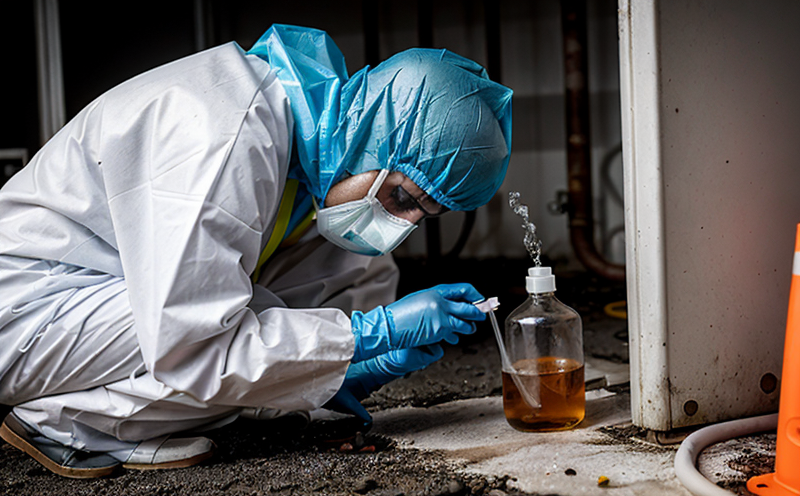ISO 15327 Chemical Composition Testing of Metallic Powders
The ISO 15327 standard is a comprehensive framework designed to ensure that metallic powders used in additive manufacturing (AM) and 3D printing processes meet the required chemical composition specifications. This testing service ensures the integrity, consistency, and quality of materials used in AM processes by verifying that all elemental compositions fall within acceptable limits as specified by international standards.
Metals such as stainless steel, aluminum, titanium, cobalt-chromium alloys, and nickel-based superalloys are frequently used in 3D printing due to their excellent mechanical properties. However, variations in raw material quality can lead to inconsistencies in the final product’s performance characteristics. By performing ISO 15327 tests early in the supply chain, manufacturers can identify potential issues before they impact downstream processes or end-product reliability.
The test involves dissolving a small sample of the metallic powder into an appropriate solvent and then analyzing it using various analytical techniques such as Inductively Coupled Plasma Mass Spectrometry (ICP-MS), X-ray Fluorescence (XRF), or Energy Dispersive Spectroscopy (EDS). These methods allow for precise quantification of trace elements down to parts per million levels, ensuring accurate representation of the material composition.
Compliance with ISO 15327 is crucial not only because it guarantees adherence to global quality standards but also because these tests help prevent defects that could arise from impurities or deviations in elemental proportions. For instance, excessive iron content in titanium powders can lead to embrittlement during processing while insufficient chromium levels may result in reduced corrosion resistance.
Moreover, this testing helps ensure compatibility between different materials being used within a single build, which is essential for multi-material AM applications where multiple layers of distinct metals are deposited sequentially. Ensuring proper alloying between adjacent layers ensures the desired mechanical properties throughout the entire structure.
Another critical aspect addressed by ISO 15327 testing relates to trace impurities that might otherwise go undetected during conventional manufacturing processes but become problematic when subjected to extreme conditions characteristic of AM environments. Elements like boron, silicon, or sulfur must be controlled rigorously since even low concentrations can adversely affect the mechanical strength and wear resistance of certain alloys.
Given the importance of this service in ensuring reliable outcomes from additive manufacturing operations, it is imperative that laboratories performing these analyses adhere strictly to stringent quality control measures throughout every stage of sample preparation, analysis, data interpretation, and reporting. This includes using calibrated equipment operated by skilled technicians who are well-versed in both the theoretical underpinnings and practical applications of ISO 15327.
- ICP-MS
- XRF Spectrometry
- EDS Analysis
Dedicated to Quality: Eurolab Advantages
At Eurolab, we pride ourselves on offering world-class services tailored specifically for industries reliant upon precision and reliability. Our ISO 15327 chemical composition testing of metallic powders goes above and beyond mere compliance; it ensures your products meet or exceed the highest international standards while providing valuable insights into potential issues that could compromise material integrity.
Our team comprises highly experienced professionals equipped with state-of-the-art instrumentation capable of delivering precise results even for minute quantities of elemental constituents. This capability allows us to detect trace impurities at levels far below what would typically be possible through standard manufacturing processes alone.
We employ rigorous quality control protocols throughout each step of the testing process, from initial sample preparation right up until final documentation and certification. By doing so, we minimize the risk of human error or contamination that could otherwise affect test accuracy.
Moreover, our commitment to excellence extends beyond just technical expertise; we also prioritize customer satisfaction by offering fast turnaround times without compromising on quality. Whether you require one-off tests or regular batch analyses, Eurolab ensures consistent delivery of accurate results within your specified deadlines.
Why Choose This Test
Choosing ISO 15327 chemical composition testing for metallic powders is essential for several reasons. Firstly, it provides a critical layer of assurance regarding the quality and consistency of raw materials used in additive manufacturing processes. By verifying that all elemental compositions fall within acceptable limits as specified by international standards, this test helps prevent defects that could arise from impurities or deviations in elemental proportions.
Secondly, compliance with ISO 15327 is increasingly becoming a prerequisite for entry into global markets, particularly those where stringent quality controls are enforced. Ensuring adherence to these standards not only enhances your product’s reputation but also facilitates smoother international trade by eliminating barriers imposed by regulatory requirements.
Thirdly, this testing service supports continuous improvement initiatives within organizations focused on enhancing product performance and durability. Through regular ISO 15327 tests, companies can identify trends or patterns in material quality that may indicate underlying issues within their supply chains, prompting proactive corrective actions before they escalate into larger problems.
Lastly, choosing this test enables manufacturers to stay ahead of emerging industry trends by leveraging advanced analytical techniques capable of detecting trace impurities at levels far below what would typically be possible through standard manufacturing processes alone. This capability ensures that materials used in additive manufacturing meet the highest international standards, thereby enhancing product reliability and performance.
International Acceptance and Recognition
- American Society for Testing Materials (ASTM): ASTM E1570 covers chemical analysis of metallic powder used in AM processes, aligning closely with ISO 15327.
- European Committee for Standardization (CEN/TC 262): CEN/TC 262 WG1 has developed several standards including EN ISO 15327 which is now widely adopted across Europe.
- Institute of Electrical and Electronics Engineers (IEEE): IEEE P800.2 specifies guidelines for chemical analysis of metallic powder used in AM, supporting global harmonization efforts.





